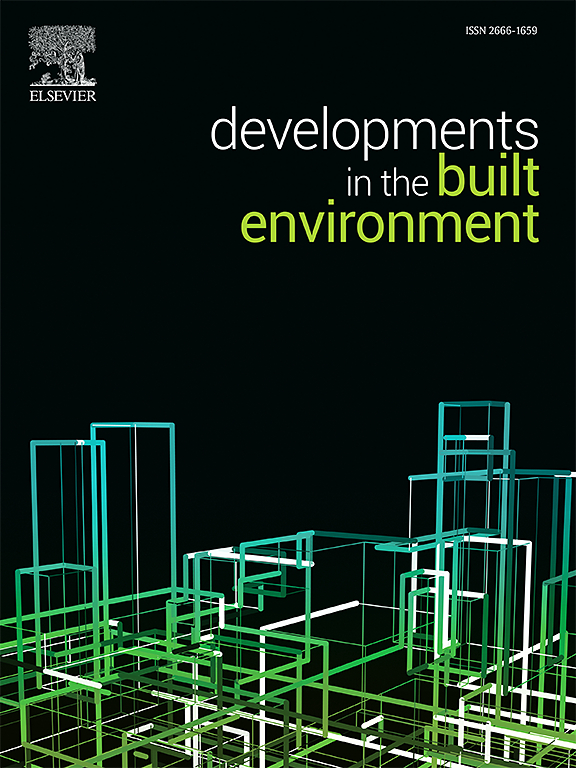通过绿色混凝土的预测建模革新可持续建筑
IF 8.2
2区 工程技术
Q1 CONSTRUCTION & BUILDING TECHNOLOGY
引用次数: 0
摘要
混凝土是世界上最常用的建筑材料,但由于其巨大的碳排放,其他温室气体排放和生产过程中的资源消耗,它对环境产生了重大的负面影响。作为回应,学术界和商界领袖一直在创造传统混凝土的尖端替代品。其中,绿色混凝土已成为突出的可持续选择。本研究提出了使用线性和指数回归技术预测正常和绿色混凝土抗压强度发展的比较建模框架。7、14和28天的试验强度数据被用于开发两种混凝土类型的回归模型。对于普通混凝土,我们建立了一个线性回归模型,得出了很强的相关性(R2 = 0.844),而绿色混凝土,其特征是补充胶凝材料的火山灰活性延迟,最好用指数模型来表示。指数回归提供了一个很好的适合绿色混凝土强度数据,捕捉非线性强度增益模式的典型混合含有粉煤灰和再生骨料。此外,还进行了帕累托分析,以确定对强度发展有贡献的最关键的养护期。结果表明,绿色混凝土约86%的28天抗压强度在前14天内达到,强调了早期养护和配合比优化的重要性。总体而言,该研究展示了绿色混凝土强度发展的预测模型如何不仅支持更有效的配合比优化,而且通过促进环保材料的使用和数据驱动决策,有助于推进可持续建筑实践。本文章由计算机程序翻译,如有差异,请以英文原文为准。
Revolutionizing sustainable construction through predictive modeling of green concrete
Concrete is the most commonly used building material in the world, yet because of its enormous carbon emissions, other greenhouse gas emissions, and resource depletion during production, it has a major negative impact on the environment. In response, academic and business leaders have been creating cutting-edge substitutes for conventional concrete. Among them, green concrete has become a prominent sustainable option. This study presents a comparative modeling framework for predicting the compressive strength development of normal and green concrete using both linear and exponential regression techniques. Experimental strength data at 7, 14, and 28 days have been used to develop regression models for both concrete types. A linear regression model has been constructed for normal concrete, yielding a strong correlation (R2 = 0.844), whereas green concrete, characterized by the delayed pozzolanic activity of supplementary cementitious materials, has been best represented by an exponential model. The exponential regression provided an excellent fit to green concrete strength data, capturing the nonlinear strength gain pattern typical of mixes incorporating fly ash and recycled aggregates. In addition, a Pareto analysis has been performed to identify the most critical curing periods contributing to strength development. Results show that approximately 86 % of the 28-day compressive strength in green concrete has been achieved within the first 14 days, emphasizing the importance of early-age curing and mix optimization. Overall, the study demonstrates how predictive modeling of strength development in green concrete not only supports more efficient mix optimization but also contributes to advancing sustainable construction practices by promoting the use of eco-friendly materials and data-driven decision-making.
求助全文
通过发布文献求助,成功后即可免费获取论文全文。
去求助
来源期刊

Developments in the Built Environment
Multiple-
CiteScore
7.40
自引率
1.20%
发文量
31
审稿时长
22 days
期刊介绍:
Developments in the Built Environment (DIBE) is a recently established peer-reviewed gold open access journal, ensuring that all accepted articles are permanently and freely accessible. Focused on civil engineering and the built environment, DIBE publishes original papers and short communications. Encompassing topics such as construction materials and building sustainability, the journal adopts a holistic approach with the aim of benefiting the community.
 求助内容:
求助内容: 应助结果提醒方式:
应助结果提醒方式:


